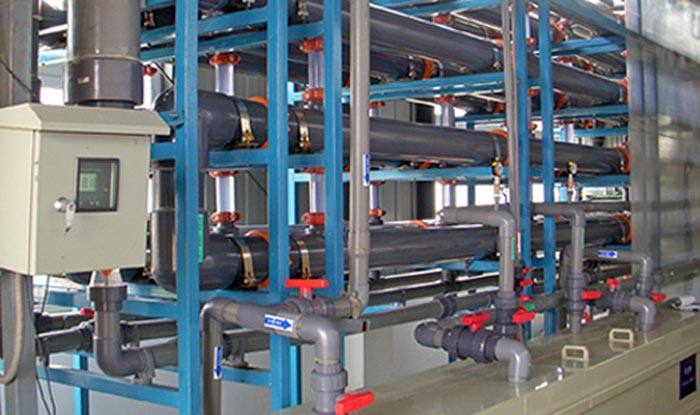Side-Stream Recycling

Most industrial operations generate a substantial quantity of "side-stream" waste water. These streams are characterized by their high concentrations and difficult-to-treat property. Recent studies have identified side-stream waste water as a major cause of performance problems to the typical conventional treatment operations. Industries have started water reuse and water recycle programs for the less desirable waste water sources as a long-term sustainable solution to the problem. Duraflow will discuss the technical challenges associated with side-streams management.
For most industrial water and wastewater treatment operations, a substantial quantity of sidestream wastes is generated from the manufacturing and water/wastewater treatment processes as by-products of the operations. These streams are characterized by high concentrations in total dissolved solids (TDS), suspended particles, difficult-to-treat chemicals and organic substances. These side-stream wastes cause significant interferences, malfunctions and damages, in many cases, to the treatment operation. The major impacts observed are discussed.
Side steam water recycle with Reverse Osmosis (RO) - RO membranes are designed for removal of dissolved solids with high efficiency, but adversely affected or fouled by suspended solids, colloidal material or scale. Industrial side-stream wastewater typically contains most, if not all, of these fouling substances. In wastewater recycling applications, RO can rarely function independently without any protection from the fouling materials. Appropriate pretreatment must be provided to achieve stable performance of RO membranes.
Tubular Membrane Microfiltration (MF) – Certain MF products have demonstrated the ability to handle concentrated wastewater and significantly reduce membrane fouling to provide stable, predictable RO performance for the following key reasons:
- Tubular Membrane MF is designed to handle very high TSS of >5,000 mg/L.
- Tubular MF membranes can be made of PVDF and can be cleaned with mineral acids, and oxidizers (bleach, peroxide)
- MF filtration produces a quality product water with NTU (<1.0) and SDI (<3.0)
Chemical pre-treatment plays a key role in membrane-based treatment or recycle. Properly designed and controlled chemistry allows for foulant removal by filtration with the Tubular membrane. Hardness is reduced by 95%, Silica is removed by 90%, metals are removed by 99%, and Suspended solids (TSS) are removed by 100%. The filtrate has an SDI of <3.0. These tubular membrane and RO recycle systems have been operating for more than 8 years. The tubular membranes have not been replaced and the RO life has been 5 years. Read more about these successful installations.
To learn more about RO Brine Recovery, and how Duraflow's Tubular Membrane system works, read the full article.

